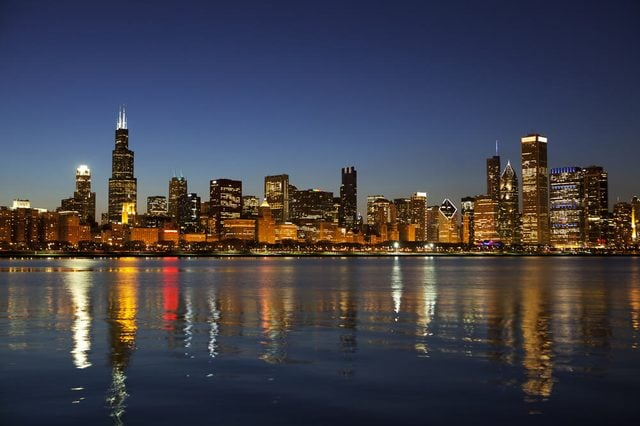https://www.instagram.com/reel/C-ySg7tJTzL/?utm_source=ig_embed&utm_campaign=loading
An excerpt from Readers' Digest -
The Surprising Reason Why Chicago Is Called the "Windy City"
It's got nothing to do with the weather.
By Meghan Jones
 |
| Grey Tree Studios/Shutterstock |
| Well, when the nickname came to be, the “Windy City” meaning wasn’t describing the weather but the people. (Don’t worry, not that kind of wind.) Nineteenth-century journalists first gave Chicago this designation when criticizing the city’s elite as “full of hot air.” In the Chicago Daily Tribune, a reporter wrote in 1858 that “[a] hundred militia officers, from corporal to commander … air their vanity … in this windy city.” Another reporter, a proud citizen of Milwaukee, boasted that his own city was the better of the two: “We are proud of Milwaukee because she is not overrun with a lazy police force as is Chicago—because her morals are better … than Chicago, the windy city of the West.” They meant that the city was full of “windbags,” people with inflated egos who cared about nothing but profit. (Learn these 12 signs someone has a massive ego.) https://www.rd.com/article/chicago-windy-city/ |
An excerpt from Buzzfeed -
21 Clever Mnemonic Devices That Will Help You Remember Almost Everything
Please Excuse My Dear Aunt Sally.
By Sarah Aspler, BuzzFeed Staff, Canada
 |
| BuzzFeed / Getty |
4. The order of mathematical operations:
 |
| BuzzFeed / Getty |
5. When to use "affect" or "effect":
 |
| BuzzFeed / Getty |
An excerpt from CBS Evening News -
He was reading at 1 and doing fractions by 2. At 13 years old, he's majoring in aerospace engineering at Georgia Tech.
By Mark Strassmann
An excerpt from designboom -
alex schweder + ward shelley's 'ReActor' house rotates atop a concrete column
An excerpt from AllThatsInteresting -
Haunting Photos Of Nagoro, The Japanese Village Where The Dead Are Replaced With Life-Size Dolls
Artist Tsukimi Ayano has made at least 400 dolls to repopulate the dwindling village of Nagoro
By Erin Kelly | Edited By Jaclyn Anglis
 |
| Several dolls sit lined on a bench. KAZUHIRO NOGI/AFP via Getty Images |
It’s BACK TO SCHOOL time in America. And if we don’t trust Trump with our kids, we can’t trust him with our country.
— Eric Swalwell (@ericswalwell) August 14, 2024
🎬WATCH my new ad pic.twitter.com/2qGmeWAPm7
An excerpt from Time -